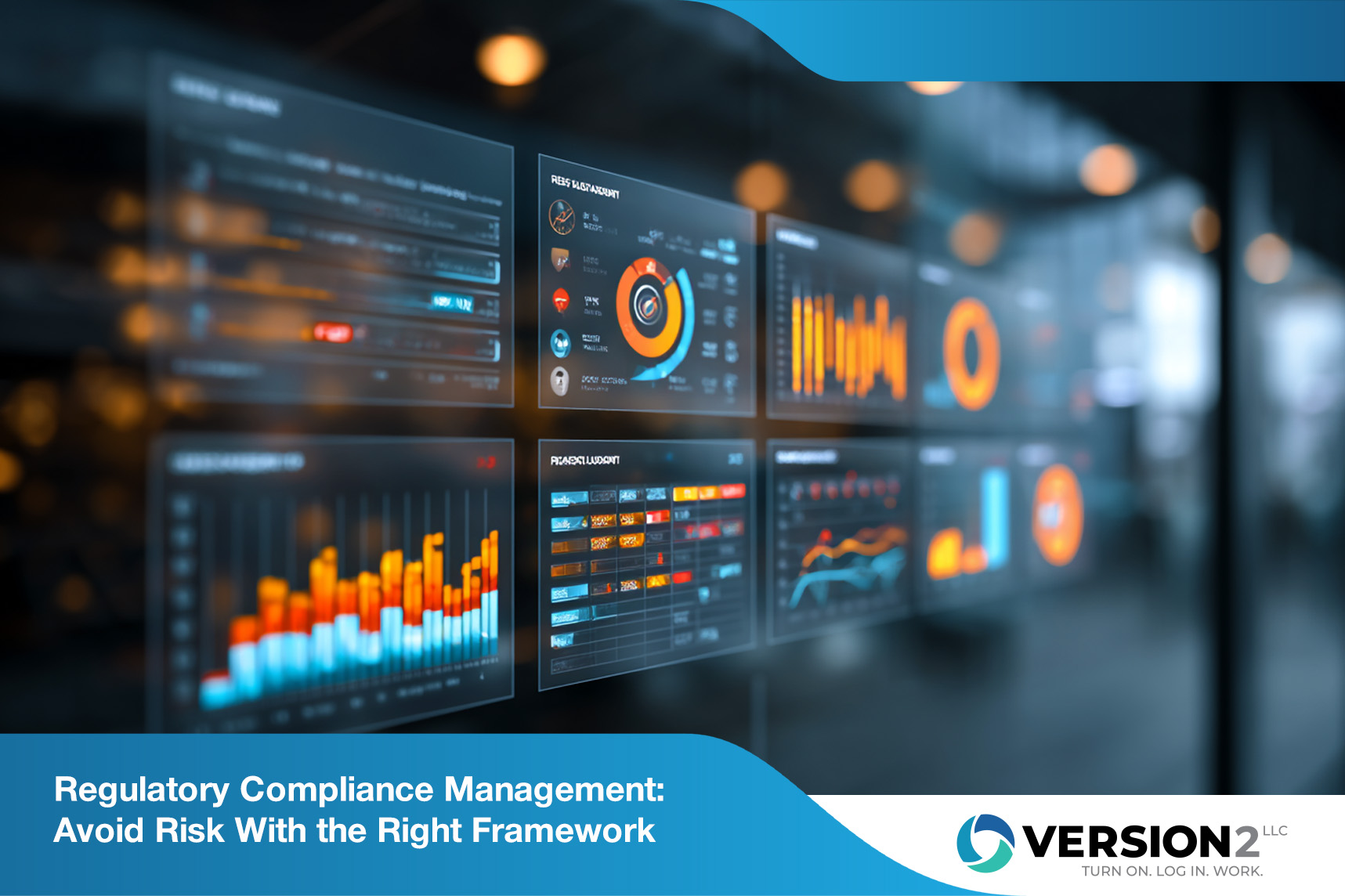
November 25, 2025
Regulatory Compliance Management: Avoid Risk With the Right Framework
Discover how regulatory compliance management protects your business, reduces risk, and helps meet changing regulatory requirements with the right systems.
November 24, 2025

Managing passwords across your company isn’t just an IT task—it’s a business-critical responsibility. Weak or reused passwords can open the door to data breaches, lost revenue, and damaged trust. In this blog, you’ll learn what business password management really means, how to avoid common mistakes, and what tools and strategies can help you stay secure. We’ll also cover topics like secure password storage, authentication methods, password sharing, and how to monitor password health across your team.
[.c-button-wrap][.c-button-main][.c-button-icon-content]Contact Us[.c-button-icon][.c-button-icon][.c-button-icon-content][.c-button-main][.c-button-wrap]
Business password management is the process of securely storing, sharing, and controlling access to passwords across your organization. It goes beyond remembering a few logins. It’s about protecting sensitive data, reducing the risk of unauthorized access, and ensuring your team follows consistent security practices.
A strong password management system helps your employees use secure, unique passwords without having to remember them all. It also lets you control who has access to what, monitor password usage, and respond quickly if credentials are compromised. Whether you're a small business or growing enterprise, having a centralized system is key to keeping your data safe. You can learn more about small-medium business password management solutions.

Even with the best tools, mistakes can happen. Here are six common issues that can put your business at risk:
Many businesses still store passwords in spreadsheets or written notes. These methods are easy to access—but also easy to steal. They offer no encryption, no access control, and no audit trail.
When teams share passwords over email or chat, there’s no way to track who accessed what. This opens the door to unauthorized access and makes it hard to revoke credentials when someone leaves the company.
Reusing passwords is one of the biggest security risks. If one account is breached, attackers can use the same password to access others. A password manager helps enforce unique passwords for every login.
2FA adds an extra layer of security by requiring a second form of verification. Without it, even a strong password can be compromised if it’s leaked or stolen.
Without regular checks, weak or outdated passwords can go unnoticed. A good system should monitor password strength and alert you to risks.
Not every employee needs full access. Limiting permissions based on roles helps reduce the impact of a breach and keeps sensitive data more secure.
Here’s what you gain by switching to a dedicated password management system:

Password managers for business are designed to handle the complexity of team-based access. Unlike personal tools, they offer features like role-based permissions, audit logs, and secure vaults for storing sensitive credentials.
These tools also support integrations with SSO (single sign-on), making it easier for employees to log in while maintaining high security standards. Some even offer browser extensions and mobile apps to streamline access across devices.
Not all password managers are built the same. Here’s what to look for when choosing one for your company:
This lets you assign different access levels to different team members. For example, your finance team doesn’t need access to IT credentials.
Audit features let you track who accessed what and when. This is critical for compliance and internal security reviews.
Look for tools that use strong encryption and zero-knowledge protocols. This means even the provider can’t see your data.
The best systems support Multi-Factor Authentication (MFA) and SSO to simplify login while improving security.
You should be able to quickly add or remove users, assign access, and revoke credentials when someone leaves.
Instead of sending passwords over email, use built-in sharing features that keep credentials encrypted and trackable.

Start by assessing your current password practices. Identify where credentials are stored, how they’re shared, and who has access. Then, choose a password manager that fits your business size and needs.
Train your team on how to use the system. Set clear policies for password creation, sharing, and updates. Make sure to enable features like 2FA and audit logging. Finally, review usage regularly to ensure compliance and address any gaps.
Managing passwords well takes more than just software. Follow these tips to strengthen your security:
Sticking to these practices helps reduce the risk of breaches and keeps your business data safe.

Are you a business with 10 to 100 employees looking for a better way to manage passwords? If you're growing and need to protect sensitive data without slowing down your team, we can help.
At Version 2, we specialize in helping businesses set up secure, scalable password management systems. We’ll guide you through choosing the right tools, setting up access controls, and training your team. Contact us to get started.
[.c-button-wrap][.c-button-main][.c-button-icon-content]Contact Us[.c-button-icon][.c-button-icon][.c-button-icon-content][.c-button-main][.c-button-wrap]
The best password manager for small businesses should offer secure password storage, team sharing, and role-based access. Tools like Bitwarden and NordPass provide these features, along with encryption and browser extension support.
Look for a system that includes a free trial so you can test it before committing. Make sure it supports strong password generation and has a clear audit trail to track usage.
To protect your business email, use strong passwords and enable two-factor authentication. Business email protection also involves monitoring login activity and setting up alerts for suspicious behavior.
Using a password manager helps ensure each email account has a unique password. It also prevents password sharing through insecure channels, reducing the risk of a breach.
Credential management is the process of storing, organizing, and securing login information for systems and services. It ensures only authorized users can access sensitive data.
A strong credential management system helps reduce the risk of unauthorized access and supports compliance with internal security policies. It also simplifies user onboarding and offboarding.
Enterprise password managers include features like centralized control, audit logging, and integration with SSO. They’re built for managing access across teams and departments.
Unlike personal tools, they support secure password sharing, enforce security policies, and allow for role-based access. These features are essential for businesses with multiple users and sensitive data.
Yes, password managers reduce password fatigue by storing and autofilling credentials. This means users don’t have to remember multiple complex passwords.
They also help enforce the use of unique passwords, improving overall password security. Features like autofill and sync across devices make daily use easier for employees.
A solid business plan for password management should include policies for password creation, sharing, and updates. It should also define user roles and access levels.
Include regular audits, employee training, and tools that support encryption and secure access. This helps protect your business from weak passwords and unauthorized access.

November 25, 2025
Discover how regulatory compliance management protects your business, reduces risk, and helps meet changing regulatory requirements with the right systems.

October 30, 2025
This blog covers remote work security essentials, including tools, risks, and best practices to help protect your team, devices, and data from cyber threats.

October 29, 2025
Explore cloud cost optimization strategies, tools, and best practices to reduce waste, manage cloud spend, and improve visibility across your cloud environment.